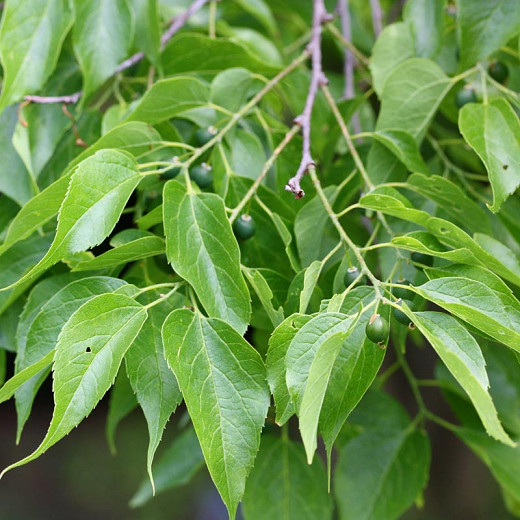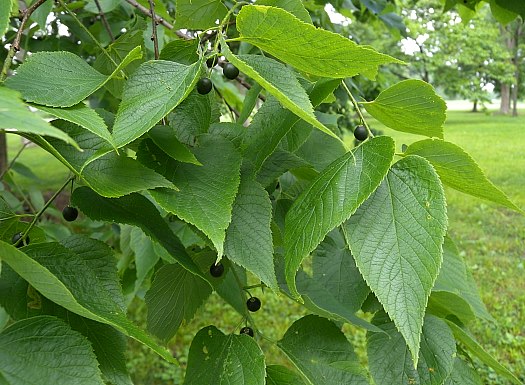hackberry tree leaves turning black
Also known as American hackberry common hackberry Celtis occidentalis is a fast-growing member of the elm family that typically grows to a height of about 70 feet with. These lace bugs spend the winter as eggs under.
Celtis Occidentalis Hackberry Minnesota Wildflowers
The insects feed on the sap from the leaves and secrete sticky honeydew that in turn encourages the growth of black sooty fungus on infested tree areas.
. Hackberry Tree Problems. Not hairy on the undersurface. Yellow discolorations on upper leaf surface above the nipple galls.
It could also be seen on the leaves of nearby plants. You likely have a population of aphids in the tree. Aphids suck sap from leaves and secrete a sticky liquid called honeydew.
In the fall the leaves turn a bright yellow to yellow-green. More information on Hackberry nipple. Premature leaf drop can occur during heavy infestations.
These edible fruits which have a flavour similar to dates mature to a purple-black colour in the early fall and persist on the tree throughout the winter. Lace bugs are sap feeding insects commonly found on the leaves of shade and ornamental trees in Iowa. 10 24 m wide.
Wooly aphids are small white insects that fall off hackberry trees and appear to float in the air. Raised cushion-like bumps on affected branches may be cream to orange or red turn black with age. Hackberry has unremarkable small green drooping flowers.
My Hackberry tree appears to have 2 diseases going on. What can I do. 18th to 316th long.
Honeydew coats everything below and makes great food for. Small tree with rounded crown pink to purplish flowers in early spring. In the fall months the leaves will turn into a bland yellowish color before falling off.
Adults are light brown with flecks of creamish-white and look like miniature cicadas. Both stages live on the lower surface of leaves. Hackberry lace bugs are 18 to 316 inches long sap-feeding insects with clear ornate lacy wings.
This will also reduce the damage being done to the tree. Though lace bugs from. The browning of the hackberry Celtis occidentalis leaves is probably due to lace bugs.
Hackberry 10 Seeds From Amazon. Mold will grow all over the hackberry blacking everything under the tree. Youll recognize this tree by their broad white trunks.
Again this year we are experiencing a bumper crop of hackberry lace bugs. Nymphs are spiny and wingless. As a result a black mold known as sooty mold covers the leaves stems and possibly the bark of the tree.
While the galls cause no permanent damage they cause trees to begin shedding their leaves in late summer or early fall. Many will land on lower leaves but washing will remove them to the ground. Its one of the worst trees for your yard.
Other trees besides hackberry have lace bugs but hackberry seems to suffer the most sever and noticeable symptoms. After the profuse blooms fade gray-green foliage is revealed turning red yellow and purple in the fall. But if you dont have a tree that naturally loses its leaves in spring your tree could have an infection.
The hackberry is also known for its distinctive bark surface which has a corky texture with warts at the base and is often described as stucco-like. Trees most commonly affected are hackberry sycamore and oak. 15 21 m tall and 30 to 80 ft.
Requires little pruning after lower. The tiny winged bugs are probably hackberry lace bugs. Could our tree be sick.
This tree could be suffering from multiple issues. Avoid using fertilizer spikes or pellets that contain nitrogen while planting a tree. The foliage of trees infected with armillaria mellea starts to discolor and drop.
Lace bugs are present every year on several of our common deciduous trees but only occasionally are the populations large enough to be noticed. Cottonwood trees are massive shade trees that can be found all throughout the United States. Heart-shaped leaves are reddish at emergence become dark green then yellow in the fall.
A mature hackberry tree- hardy and durable this tree makes an excellent urban species. There are tiny black winged bugs with tinier babies all over the inside of the leaf. Sugarberry trees grow between 50 and 70 ft.
Some trees tend to hang on to a portion of their leaves through the winter making spring leaf drop perfectly normal. Another key feature of the. This fall the deck was covered with a sticky saplike substance that turned a bright green umbrella black.
We usually think of fall as the season for shedding but there are a few tree species that go against the grain. Circular nipple-like swellings that project from the undersides. Water every one or two weeks during dry periods.
As they feed they leave tiny yellow to white spots on leaves and dark varnish-like waste spots on the under sides. You can also cut some off those branches that are extra crowded grow vertically or rub against each other. While all the other trees in the area are green from the recent rains the leaves on this tree are turning yellow and falling off.
The aphids infest the lower sides of leaves in large numbers creating small globs of fuzzy mass. Also called the sugar hackberry the sugarberry tree is a native medium-sized tree with pointed leaves small clusters of greenish flowers and reddish-purple edible fruit. Keep in mind that pruning is an option only for established specimens.
They suck the sap out of the leaves and secrete a sticky residue called honeydew. Also hackberry trees provide an abundance of black fruits that are great. We have a tree that looks like a Hackberry and even has pea-sized berries but the leaves are larger.
In this process you must remove any diseased damaged or dead branches to give your trees that fresh look. Tiny yellow flowers bloom before leaves emerge. This black sticky substance covers the hackberry tree.
Another name for Celtis laevigata is southern hackberry. You may not be able to reach the top of an 80-foot-tall tree without a power washer or commercial spray device but even if you dont reach the top of the tree you can reduce the severity of the problem. The hackberry trees leaves change color in the fall turning yellow before falling off of the tree.
The leaves are turning brown and are falling down a lot in the last weekThe leaves have the whitish wart-like bumps on the underside and they also have black tiny dots covering the leaf. Its attractive serrated leaves range from dull green to glossy and have unequal bases and tapered ends. If you happen to have a hackberry in your yard hack it down now.

Tree Tour Facilities The University Of Utah

Hackberry Trees The Garden Bench
Common Hackberry Celtis Occidentalis
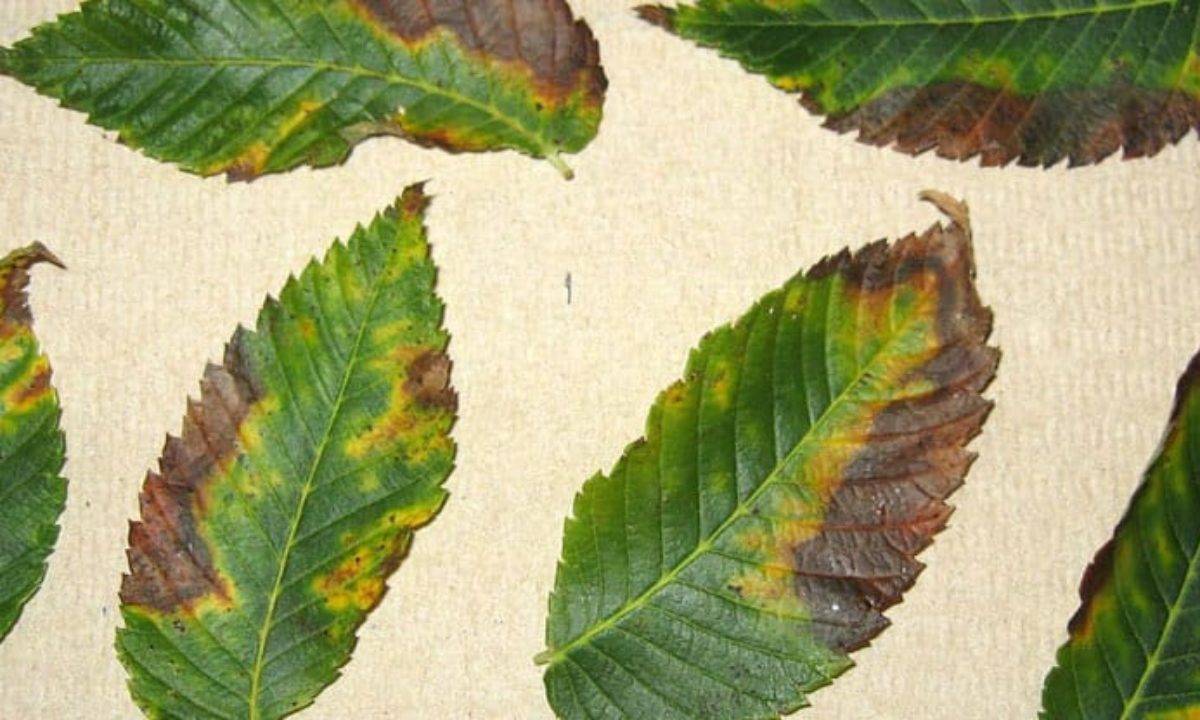
Brown Dying Or Scorched Tree Leaves Bacterial Leaf Scorch Faqs Organic Plant Care Llc Flemington Nj

Northern Hackberry Real Paleo Food Four Season Foraging
Common Hackberry Celtis Occidentalis
A Sticky Situation On Hackberry Trees Pests In The Urban Landscape Anr Blogs
/red-buckeye-tree-care-and-growing-guide-5095549-hero-76e34b17405c48a990ea24e988c363b5.jpg)
Hackberry Tree Care And Growing Guide
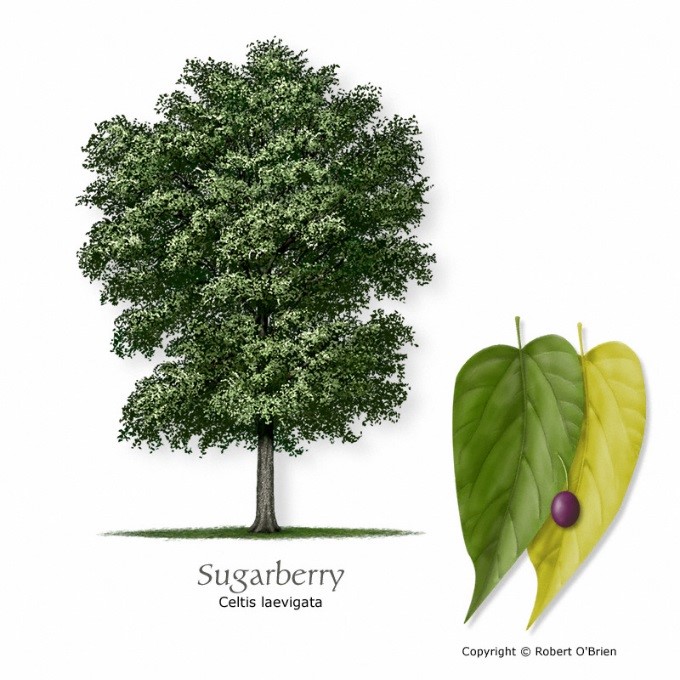
Species Spotlight Celtis Laevigata Sugarberry Austintexas Gov

Hackberry Trees Of Manitoba Inaturalist
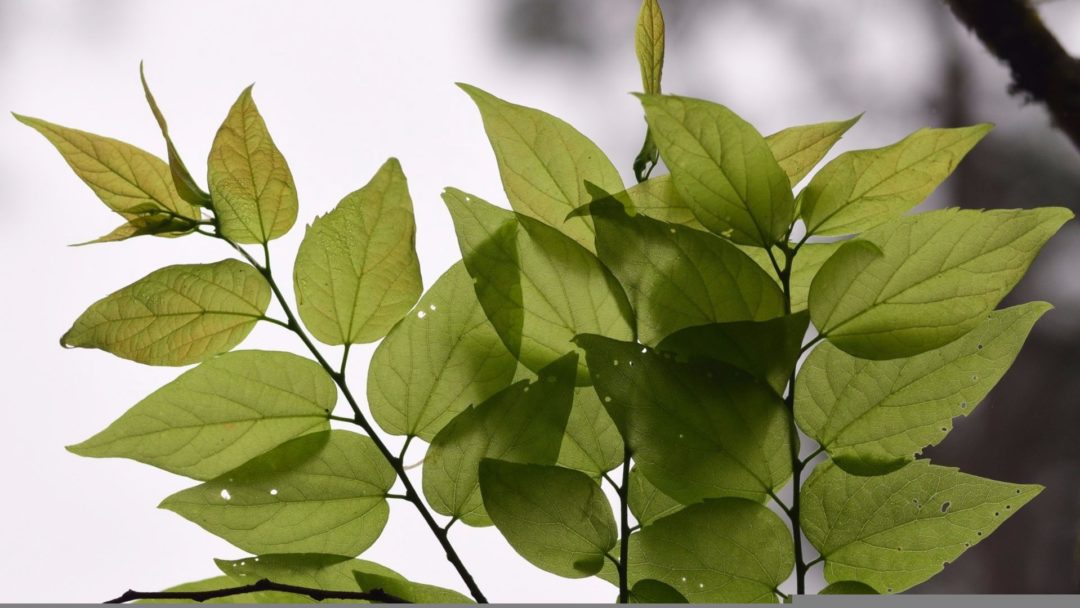
Hackberry One Tough Tree Arbor Day Blog
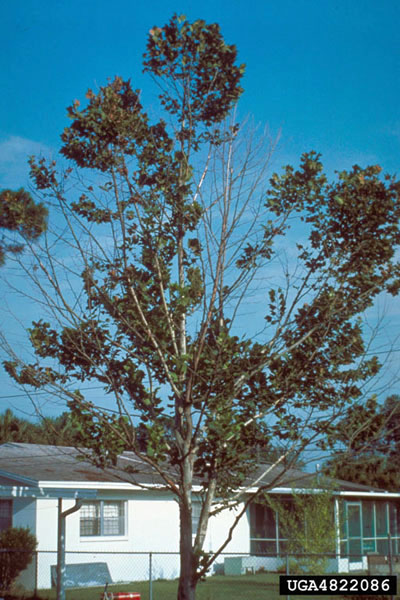
What S Wrong With My Plant Garden University Of Minnesota Extension

Ut Tsu Extension Davidson County Hackberry Trees Turning Black Since The Beginning Of The Year 2000 The Majority Of Exotic Insect Pests That Have Been Introduced Into The United States Have

What S Wrong With My Plant Garden University Of Minnesota Extension
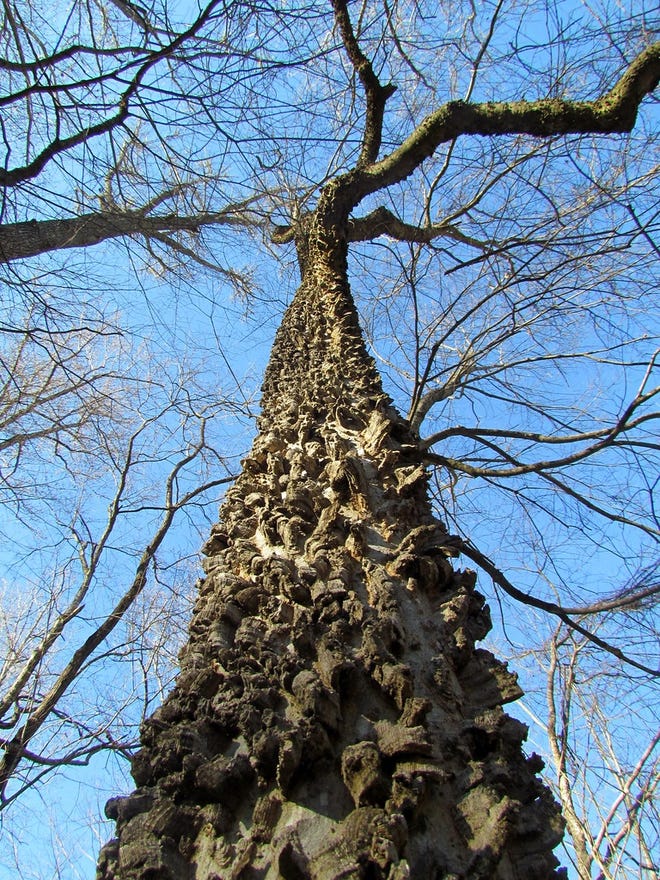
Hackberry Trees Are Under Attack

Hackberry Tree On The Tree Guide At Arborday Org

What S Behind That Black Sticky Substance From Your Hackberry Tree
